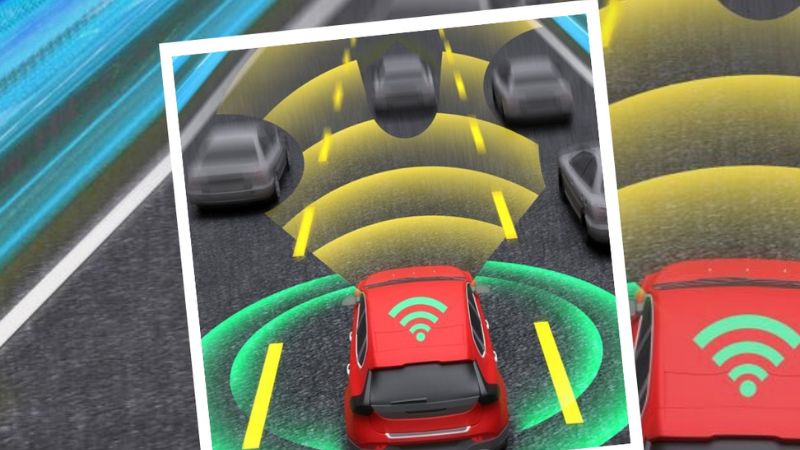
In the ever-evolving landscape of modern vehicles, the role of radar technology has become increasingly pivotal. As vehicles integrate advanced sensor fusion capabilities, the demand for cutting-edge radar simulators has surged.
Modern vehicles, equipped with an array of smart features, rely heavily on radar technology for enhanced safety and performance. Radar systems, using radio waves, enable vehicles to detect objects, obstacles, and other vehicles in real-time. This not only aids in collision avoidance but also contributes to the development of autonomous driving technologies.
Radar sensors, strategically placed on vehicles, continuously scan the surroundings, providing crucial data for decision-making algorithms. The integration of radar technology extends beyond traditional applications, such as adaptive cruise control and parking assistance, to more advanced functionalities like pedestrian detection and lane-keeping assistance.
While radar technology is powerful on its own, the synergy achieved through sensor fusion amplifies its effectiveness. Sensor fusion involves combining data from various sensors, such as radar, lidar, and cameras, to create a comprehensive and accurate representation of the vehicle's environment.
In the context of radar simulators, understanding the intricate relationships between different sensors becomes crucial. Simulating scenarios where sensor fusion is put to the test allows developers and manufacturers to fine-tune algorithms and improve the overall reliability of advanced driver assistance systems (ADAS) in modern vehicles.
Similar to radar, lidar simulation is crucial for the development and testing of lidar-based automotive applications. Simulators allow manufacturers to recreate complex scenarios, fine-tune lidar algorithms, and assess the performance of these systems in diverse environments. Lidar simulation accelerates the validation process, ensuring the robustness and effectiveness of lidar technology in real-world conditions.
The applications of radar simulators span across multiple industries, each with unique demands. In the aviation sector, radar simulators play a vital role in training air traffic controllers and testing radar systems for aircraft. In the automotive industry, these simulators facilitate the development and testing of radar based ADAS technologies.
Moreover, radar simulators find applications in defense for training purposes, allowing military personnel to simulate radar-guided missile systems and electronic warfare scenarios. The versatility of radar simulators makes them indispensable tools in ensuring the reliability and performance of radar technology across different domains.
The global radar simulator market offers a diverse range of simulator types tailored to specific needs. Ground-based simulators, often used for testing automotive radar systems, provide a controlled environment for evaluating sensor performance in various scenarios.
Airborne simulators cater to the aviation industry, enabling realistic training for air traffic controllers and testing radar systems on aircraft. Naval simulators, designed for maritime applications, simulate radar interactions in naval environments, contributing to the development and enhancement of radar systems for ships.
Understanding the specific advantages and use cases of each simulator type is crucial for stakeholders aiming to deploy radar technology across different applications.
North America, with its tech-savvy culture and robust automotive and aerospace industries, stands as a key player in the global radar simulator market. The region has witnessed significant investments in research and development, leading to the rapid adoption of radar technology in various sectors.
In the automotive industry, North American manufacturers leverage radar simulators to refine ADAS technologies, ensuring compliance with stringent safety standards. The aviation sector benefits from advanced radar simulation for air traffic control training and testing radar systems for commercial and military aircraft.
However, the North American radar simulator market is not without challenges. Regulatory frameworks, privacy concerns, and the need for standardization pose ongoing considerations for industry players in the region.
In the Global Radar Simulator Market by Application in 2022, the Commercial category is showing great promise, with a projected market value of $2.6 billion by 2030.
By 2022, the hardware sector will hold the top spot in the global radar simulator market by component market share, and by 2030, the market will be valued $2.4 billion.
As a leading provider of secure processing solutions, Mercury Systems specializes in delivering trusted and secure radar technologies. Their expertise lies in developing high-performance solutions that cater to the evolving needs of the radar simulation market.
Renowned for its electronic measurement expertise, Keysight Technologies excels in providing solutions that span the entire radar simulation spectrum. From RF and microwave technologies to advanced simulation tools, Keysight is a key player in advancing radar technology.
Cadence Design Systems is a prominent player in electronic design automation, offering solutions that empower the development of radar systems. Their contribution to the radar simulation market includes tools and technologies essential for designing and validating complex radar applications.
L3Harris Technologies is a global aerospace and defense technology innovator. Within the radar simulation market, L3Harris provides cutting-edge solutions for both military and commercial applications, ensuring robust and realistic simulations.
RTX Corporation is a key player offering radar simulation solutions that span multiple industries. Their expertise lies in providing realistic and reliable simulation environments for testing and training, contributing to the advancement of radar technology.
Adacel Technologies is a notable player specializing in air traffic management and air traffic control simulation systems. Their radar simulation solutions are integral to the aviation sector, enabling realistic training scenarios for radar operators.
Cambridge Pixel is recognized for its radar processing and display solutions. Within the radar simulation market, the company provides versatile and customizable tools that enhance the visualization and analysis of radar data, catering to a diverse range of applications.
In conclusion, the global radar simulator market is poised for significant growth, fueled by the integration of radar technology in modern vehicles and the critical role played by sensor fusion.
Radar excels in providing reliable object detection and distance measurement, lidar adds a new dimension with its ability to create detailed 3D maps for advanced navigation and autonomy.
As applications diversify and types of simulators evolve, the market continues to be dynamic. Understanding regional nuances, such as those in North America, is essential for stakeholders navigating this thriving market.